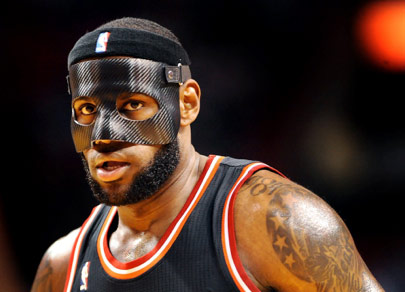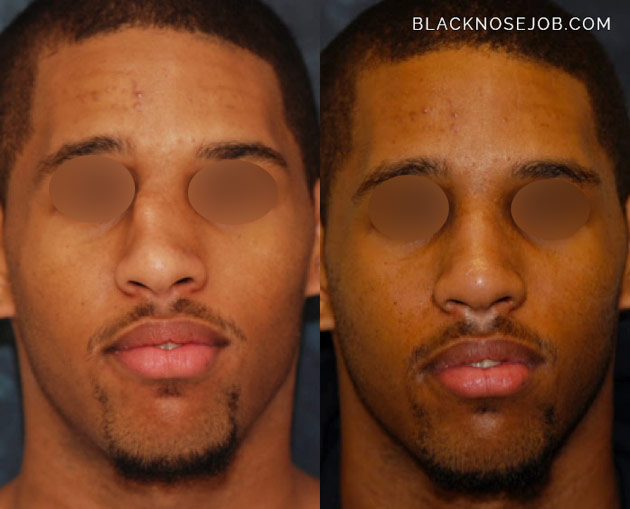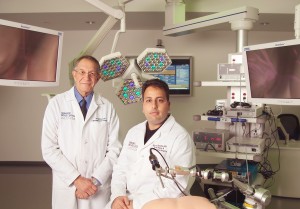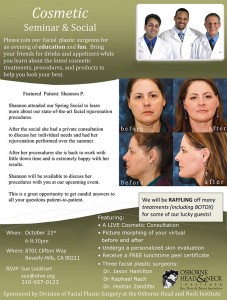- Folded Ear in Newborns: Treatment Options - April 11, 2018
- Newborn Ear Deformity: What Can Be Done? - April 11, 2018
- Ear Molding: An Overview - November 2, 2017
- Otoplasty for Protruding Ears - September 26, 2017
- Basal Cell Carcinoma: Facial Reconstruction Timing - September 26, 2017
- Clinical Considerations of Mohs Reconstruction of Cheek Defect - September 26, 2017
- Basal Cell Carcinoma: Nasal Bridge Reconstruction - September 26, 2017
- Skin Cancers Involving the Eyebrow: Clinical Considerations - October 3, 2016
- Treatment of Multiple Skin Cancer Lesions - June 1, 2016
- Skin Cancer: Nasal Reconstruction and Scar Management - June 1, 2016
 Miami Heat basketball player, LeBron James, suffered facial trauma during a game against the Oklahoma City Thunder. James was incapacitated and suffered a bloody nose when he took a seemingly inadvertent hit to the face from a rival defender. James was promptly evaluated by his physicians and was found to have a nasal fracture. He has since returned to gameplay but has been required to wear a mask to protect his nose from further trauma.
Miami Heat basketball player, LeBron James, suffered facial trauma during a game against the Oklahoma City Thunder. James was incapacitated and suffered a bloody nose when he took a seemingly inadvertent hit to the face from a rival defender. James was promptly evaluated by his physicians and was found to have a nasal fracture. He has since returned to gameplay but has been required to wear a mask to protect his nose from further trauma.
Currently, millions of people seek treatment for nasal fractures every year. Because of the typically uncomplicated nature of nasal fracture repair, patients can usually return to their normal activities within days after treatment.
How is a nasal fracture treated?
Nasal fracture treatment depends on the severity of the trauma to the nose and its surrounding structures. Uncomplicated cases of fracture can typically be treated non-surgically with a procedure known as closed nasal reduction. During this procedure, a facial trauma specialist will reposition bone fragments so that the nose heals in the proper alignment. Closed nasal reduction is typically performed under local anesthesia. Complicated fractures that involve critical facial structures are typically treated with more advanced surgical procedures.
Why is it important to treat my nasal fracture promptly?
If treated within the initial two weeks following facial trauma, most uncomplicated cases of nasal fracture do not require surgery and can be treated with closed nasal reduction. After two weeks, healing of the fractured nasal bones has already begun. The patient will have to wait until healing is complete before surgeons can reposition the nasal bones into their correct orientations. In addition, complicated nasal fractures that are accompanied by damage to surrounding critical structures are also typically addressed with advanced surgical interventions under general anesthesia.

Why should I seek medical evaluation even if I don’t think my nose is broken?
Facial trauma is commonly accompanied by large amounts of swelling and bruising. Inflammation of nasal structures can temporarily mask the appearance of a deformed and fractured nose. It is not until after swelling has subsided, days or weeks later, that a fractured nose may become evident.
Evaluation by a facial trauma specialist typically consists of skilled examination of facial structures as well as CT imaging of the face to reveal any injuries that may not be readily apparent due to inflammation.
How long will it take before I can return to my normal daily routine?
Most patients can return to their daily activities within 3-5 days, after evaluation and treatment of their nasal fracture. Following closed nasal reduction, the nose is splinted and a light activity/rest recommendation is given for 3-5 days. After this time patients can typically return to their daily routines as long as trauma to the nose is avoided. Physical activities such as sports may be cautiously resumed by using a protective mask.
Why is a mask necessary during physical activity after a nasal fracture?
Custom designed masks serve as a protective barrier from physical trauma to the nose during healing. Once set into the correct position, it is important that nasal bone fragments do not move during healing. Even a subtle direct impact during a sporting activity could change the orientation of bone fragments, potentially leading to functional issues and disfigurement.
Who should treat a nasal fracture?
It is highly recommended that a qualified facial trauma specialist treat all cases of facial trauma including suspected nasal fractures. These surgeons are trained to address the functional as well as cosmetic concerns inherent to facial trauma.
To learn more about nasal fracture evaluation and treatment, please contact the Osborne Head and Neck Institute.



